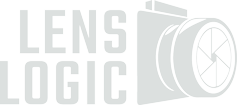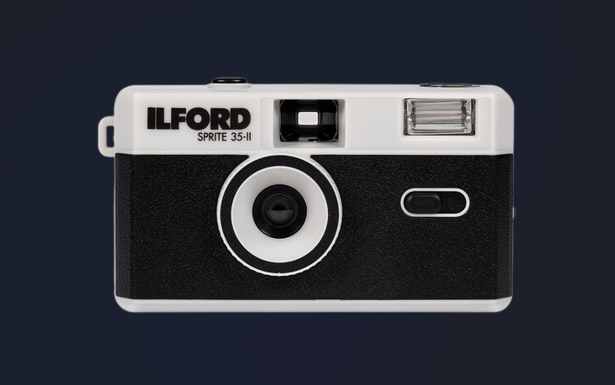Love it or hate it. Now, we are in the digital age, but more and more people are tending to be attracted to old-school point-and-shoot film cameras. For those who want to feel nostalgic when using cameras, these are gaining popularity with both novice and experienced photographers.
One of the biggest reasons people love these cameras is because they are so intuitive. Whereas more significant, much more sophisticated digital cameras have manual controls for focus and exposure that must be set before a shot. Point-and-shoot film cameras can automatically take care of this for you, which makes it perfect for beginners who want to point and fire away. In addition, since they are compact and easy to carry around, they will all make lovely travel/street photography cameras.
After all, these cameras give you that feeling of nostalgia, from inserting the film to waiting for photo development, and the characteristic feel of photos taken On camera makes it a unique experience. This also makes each photo feel more special, considering you can’t take multitudes of pictures like a digital camera. Therefore, these antique old frame cameras you can bring back by having your picture cut correctly and looking old-school. It is easy to carry around with you and gives you a nostalgic feel compared to today’s digital world of annoying chaos!
Top 7 Best Point and Shoot Film Cameras to Capture Stunning moment in 2024
Ilford Sprite 35-II – Best for Beginners
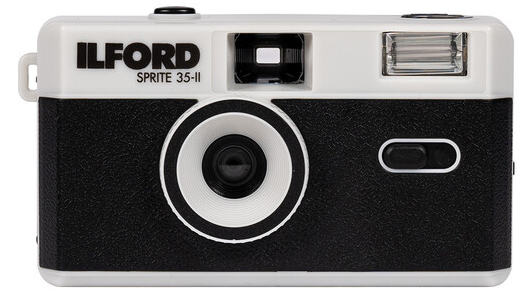
| SPECIFICATIONS | Lens: Fixed 31mm f/9, Shutter speed: 1/120s Flash: Built-in automatic flash, Viewfinder: Optical, Film type: 35mm (full-frame) Build: Lightweight plastic with textured grip Film loading: Easy-load system |
| TODAY’S BEST DEALS | Check Amazon |
| REASONS TO BUY | Simple, user-friendly design for beginners Fixed-focus lens with a wide-angle view, ideal for everyday shooting Built-in flash for indoor and low-light conditions Durable, lightweight body,perfect for casual use Affordable entry into film photography |
| REASONS TO AVOID | Limited exposure control and no manual settings Lacks focus adjustment, which may limit creativity in certain scenarios |
| BUY IT IF | DON’T BUY IT IF |
|---|---|
| ✅ You’re a beginner looking for a hassle-free film camera. | ❌ You want more creative control with manual settings. |
| ✅ You want a reliable, everyday camera for casual photography. | ❌ You need advanced features like zoom or interchangeable lenses. |
The Ilford Sprite 35-II is designed for people new to film photography. It has a simple, nostalgic design inspired by 1960s point-and-shoot cameras. With its fixed 31mm f/9 lens, it gives a slightly wide-angle perspective, perfect for capturing everyday moments. The camera operates on a fully automated system with a shutter speed of 1/120s in daylight. It also has a built-in flash for low-light situations. One of its key features is the easy-load film system, making it user-friendly for beginners or those short on time. Additionally, its small and lightweight body makes it easy to carry around.
Why Buy Ilford Sprite 35-II?
The Ilford Sprite 35-II is perfect for anyone who wants to dip their toes into film photography without the complexity of more advanced cameras. With its fixed settings and robust design, it offers a fun, straightforward way to capture moments on film.
Canon Sure Shot WP-1 – Best for Outdoor Adventures
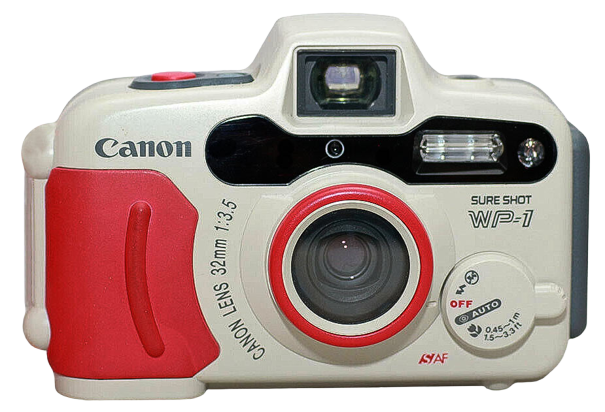
| Specifications | Lens: 32mm f/3.5, Type: 135 (35mm) film Waterproof Depth: Up to 5 meters (16.5 feet) Dimensions: 13.4 x 9 x 6.3 cm, Weight: 330g |
| TODAY’S BEST DEALS | Check Amazon |
| Reasons to Buy | Durable design for tough outdoor conditions Waterproof up to 5 meters, ideal for snorkeling or poolside use Simple point-and-shoot functionality |
| Reasons to Avoid | Limited manual control for more advanced photographers Fixed focal length, meaning no zoom options |
| Buy It If | Don’t Buy It If |
|---|---|
| ✅ You prefer a simple, point-and-shoot experience with minimal settings to manage. | ❌ You require manual controls for creative photography adjustments. |
| ✅ You need a camera that can handle rough environments, such as the beach or underwater. | ❌ You need zoom capabilities for varied shooting distances |
The Canon Sure Shot WP-1 is a tough little waterproof 35mm point-and-shoot aimed at the active lifestyle market. The Stylus is a tough little camera with basic functionality that first hit the shelves in 1994, designed for easy use on beach trips, snorkeling, or simply rough-and-tumble environments. Its slim form factor and weatherproof design mean it can take water, sand, and shocks with ease. It has a fixed 32mm f/3.5 lens that takes sharp photos if you’re new life form is on the ocean floor or dry land, and it’s waterproof to 5 meters (16.5 feet). The viewfinder is correctly adjusted to correct the distortion of shooting underwater. That makes it ideal for newcomers or hobbyists who want an easy-to-use option that they can trust to get the job done in any situation.
Why Buy Canon Sure Shot WP-1?
If you are heading out for an adventure and need a no-nonsense weather camera, the Canon Sure Shot WP-1 would make a great choice. It is built-in waterproof and shockproof, and with fully automatic features, it is simple for users to get excellent photo results. This is the outdoor camera for snorkeling, hiking, or in verdant poolside environments.
Contax T2: Best for Premium Film Photography
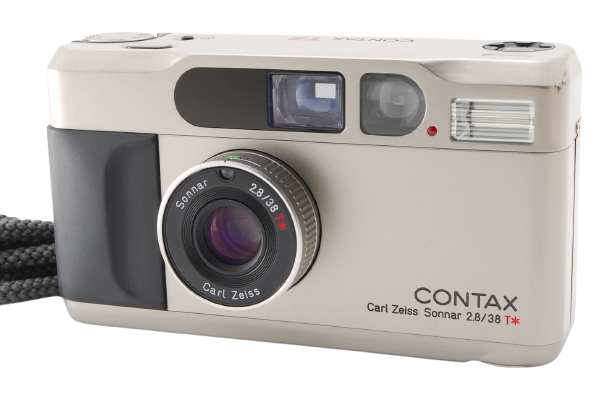
| SPECIFICATIONS | Lens: Carl Zeiss T Sonnar 38mm f/2.8 Film Type: 35mm, Aperture: f/2.8 to f/16 Shutter Speed: 1 second to 1/500 second Focus Range: 0.7m to ∞, Battery: 1 x CR123A Dimensions: 119mm x 66mm x 33mm Weight: 295g (without battery) |
| TODAY’S BEST DEALS | Check Amazon |
| REASONS TO BUY | Compact and lightweight, perfect for travel Excellent image quality with a high-quality lens. Built to last with a durable titanium body. |
| REASONS TO AVOID | Higher price point, often exceeding $1,000 for good condition models. Limited manual controls for advanced photographers. |
| BUY IT IF | DON’T BUY IT IF |
|---|---|
| ✅ You want a stylish, compact camera that delivers professional image quality. | ❌ You require extensive manual controls or advanced features for your photography. |
| ✅ You’re looking for an easy-to-use point-and-shoot for everyday photography. | ❌ You’re on a tight budget, as prices can be steep for this classic model. |
For those looking for a high-end point-and-shooter film camera that is portable and can perform with excellence, the choice is simple: the Contax T2. Its excellent lens and rugged construction led it to be equally loved by amateurs and pros, leading us to give this title from 1990 an easy win. With the Carl Zeiss T Sonar 38mm f/2.8 lens, a classic for sharpness and lovely bokeh quality, this camera provides beautiful image output under different light settings. The T2 also features a titanium body, which is the same material used for the blade itself, making it very durable and appealing aesthetically. It has an autofocus system (AF) and also a program AE mode, which makes it very user-friendly so photographers can now just focus on composition without many fussy technical settings Performance-wise, Contax T2 is capable up to 1/500s max shutter speed, good enough for action or sports photography. But less experienced photographers might find these appealing despite the lack of manual controls.
Why Buy Contax T2?
The Contax T2 is perfect for those who want a high-quality, premium point-and-shoot camera for everyday use, travel, and portrait photography. Its strong Zeiss lens and durable design make it a top choice for film enthusiasts.
Ricoh GR1s – Best for Street Photography
| SPECIFICATIONS | Sensor Type: 35mm film, Lens: 28mm f/2.8 Autofocus: Yes, with spot and multi-point options Viewfinder: Optical viewfinder, Modes: Auto, Program, Manual, SNAP, Flash: Built-in Weight: Approximately 220g |
| TODAY’S BEST DEALS | Check Amazon |
| REASONS TO BUY | Compact and lightweight design perfect for street photography Sharp, high-contrast images with a reliable lens Effective autofocus even in low light |
| REASONS TO AVOID | Common LCD display issues Lack of manufacturer support and servicing |
| BUY IT IF | DON’T BUY IT IF |
|---|---|
| ✅ You want a lightweight, high-performance film camera for candid street shots. | ❌ You require a camera with reliable electronic support for long-term use. |
| ✅ You appreciate a camera that allows for quick, intuitive shooting. | ❌ You’re concerned about potential maintenance issues with older models. |
The Ricoh GR1s is a fantastic little compact film camera celebrated by street photography fans. This makes for a great spontaneous shooter due to its lightweight, pocket-friendly form. GR1s has a 28mm f/2.8 lens with excellent sharpness and contrast, good for everything from street scenes to portraits. However, the GR1s have amazing AF performance and AE even in low-light conditions. The camera is also very quiet, so you can easily take candid pictures without drawing attention. Nevertheless, this simple camera already has features such as a built-in flash and many shooting modes greater than the value of SNAP mode, which allows you to quickly take pictures on the move. Nonetheless, there are flaws in the GR1s. A lot of users talk about problems with the top LCD display failing on these cameras, and that is something you really want to check for if you hope to use the camera in any capacity, and because Ricoh will no longer repair them, they are certainly becoming a bit of a gamble as time goes on.
Why Buy It?
If you’re looking for a compact camera that excels in street photography and captures high-quality images with minimal effort, the Ricoh GR1s is an outstanding choice. Its combination of portability, performance, and ease of use makes it a favorite among street photographers.
Nikon L35AF – Best for Travel
| Specifications | Sensor: 35mm film, Lens: 35mm f/2.8 (fixed) Autofocus: Yes, with in-viewfinder distance indication, Film Speed Range: ISO 50 to 1000 (varies by model), Flash: Built-in, with a guide number of 20, Battery: 2CR5 lithium battery |
| TODAY’S BEST DEALS | Check Amazon |
| Reasons to Buy | Simple and intuitive operation ideal for beginners. High-quality lens producing sharp images. Durable construction that can handle outdoor activities. |
| Reasons to Avoid | The battery door can be flimsy and prone to breaking. Autofocus may occasionally miss in low-light situations. |
| Buy It If | Don’t Buy It If |
|---|---|
| ✅ You’re looking for an easy-to-use film camera to start your photography journey. | ❌ You require advanced features like manual focus or extensive controls. |
| ✅ You want a reliable and sturdy camera for everyday use. | ❌ You need a compact camera that fits in your pocket easily, as the L35AF is slightly bulkier than some modern point-and-shoots. |
The Nikon L35AF is the perfect film camera for travelers wanting to get started with travel film photography. Nikon L35AF the first autofocus compact camera era 16 Feb 2019 The Nikon L35AF was released in 1983 and was the first inexpensive autofocus compact. The simple interface of this model makes it a good option for people who are just starting out with photography and eliminates a few complications that might confuse new users. This offering has a fine 35mm f/2.8 five-element lens that gives very good image quality and controls flare distortion very well. Perfect color differentiation and good contrast make it a great choice for photographers working across all shooting conditions. The camera has a basic but effective autofocus system that uses a viewfinder indicator to signal when your subject is in focus (which is more than most point-and-shoots offer).
Why Buy It?
The L35AF stands out for its build quality, being made of durable metal with a plastic coating, making it sturdy enough to withstand regular use. It’s also surprisingly lightweight and portable, fitting easily in bags without feeling cumbersome. Furthermore, the fully automatic operation means you can quickly capture moments without fiddling with settings, which is ideal for spontaneous photography.
Yashica T4 – Best for Versatile Photography
| Specifications | Lens: Carl Zeiss Tessar 35mm f/3.5 Focus: Autofocus with three infrared beams Shutter Speed: 1/700 to 1 second Minimum Focus Distance: 30 cm (about 1 foot) Flash: Auto with manual override |
| TODAY’S BEST DEALS | Check Amazon |
| Reasons to Buy | Excellent Image Quality Compact and Lightweight Reliability |
| Reasons to Avoid | Flash Issues Limited Manual Controls |
| BUY IT IF | DON’T BUY IT IF |
|---|---|
| ✅ You want a compact camera that can effortlessly capture candid moments with outstanding image quality. | ❌ You’re looking for extensive manual controls or features typically found in higher-end DSLRs. |
| ✅ You appreciate a classic camera with a rich history and design aesthetic. | ❌ You’re not prepared to invest in a camera that has seen a significant price increase due to its popularity and demand. |
Today, the Yashica T4 is a legend among point-and-shoot film cameras for its stellar performance and compact design. Though not the best choice for people new to photography, this camera is great for anyone who wants an easy-to-use and versatile camera that offers a lot of capability, albeit one designed primarily for street shooters. Featuring a Carl Zeiss Tessar 35mm f/3.5 lens, the T4 is a very sharp & rapidly-focusing point-and-shoot camera that will get you amazing pictures in your everyday scene shots where detail matters Although its focusing mechanism leaves much to be desired, it is relatively fast and accurate in practice, which permits users to bite into the spontaneous moments without any buffer. As well as programmed shutter speeds between 1/700 and 1sec, for use in a wide range of lighting conditions. It is small and fits well in a pocket or bag, which means that you can take it with you everywhere. They have a very minimalistic control panel allowing quick means to work, so this is good for fast photography but the T4 does do some other weird things like being way too eager with the flash and having a really small button selection when you want to turn it off.
Why Buy It?
If you’re looking for a reliable camera that produces stunning images with minimal effort, the Yashica T4 is a solid choice. Its automatic features allow for quick shooting without the hassle of manual adjustments. Additionally, the camera’s durable build and compact size make it easy to carry, perfect for on-the-go photography.
Olympus Mju II – Best for Compact Performance
| Specifications | Lens: 35mm f/2.8, Shutter Speeds: 4s – 1/1000s Shooting Modes: Program Automatic Flash: Built-in, Build: Plastic (weatherproof) |
| TODAY’S BEST DEALS | Check Amazon |
| Reasons to Buy | Excellent image quality with a fast lens. Compact and lightweight, perfect for travel. Weather-sealed design for outdoor shooting. Good performance in various lighting conditions. |
| Reasons to Avoid | Known for common issues like a faulty battery door and lens malfunction. Can be considered overpriced due to demand and scarcity. |
| Buy It If | Don’t Buy It If |
|---|---|
| ✅ You need a reliable, compact camera that can handle different environments and lighting. | ❌ You’re on a tight budget, as prices can be high due to its popularity. |
| ✅ You’re an enthusiast looking for a camera that balances simplicity and high-quality results. | ❌ You need a camera with advanced features, as this model is more straightforward. |
More of an enthusiast than the beginner-style camera, the Olympus Mju II (also known as Stylus Epic) is a first-rate choice for photographers looking for quality performance in a small package. Laced with a 35mm f/2.8 lens, this is perfect for amazing image shots across different lighting situations, providing brilliant details and colors to die for. Thanks to this, the gyroscope keeps the camera properly oriented, and exposure/exposure metrics can still be read off so that you focus on filming rather than ergonomic settings. The big differentiator with the Mju II is the fact that it is weather-sealed, meaning you can shoot in bokeh-wrecking conditions without fear of bricking your camera. At this time it has great street photography, travel, and casual standpoint since it’s coming to you in a very lightweight pocketable format. It also has a spot metering mode that seems to be accessed from two function buttons designed for special exposure control in difficult lighting conditions.
Why buy it?
The Olympus Mju II is an excellent choice for enthusiasts seeking a reliable and portable camera for everyday photography, travel, and street shooting. Its combination of quality, portability, and ease of use makes it a standout in the compact film camera category.
Best Point-and-Shoot Film Cameras for Different Needs
Best for Beginners: Ilford Sprite 35-II
The Ilford Sprite 35-II is an excellent choice for beginners, offering simplicity and ease of use. This compact camera features a 35mm lens and straightforward operation, making it ideal for those new to film photography. Its lightweight design ensures that beginners can take it on the go without feeling overwhelmed by complex settings.
Best for Travel: Nikon L35AF
The Nikon L35AF stands out as a travel-friendly option with its compact size and robust build. Equipped with a 35mm f/2.8 lens and automatic focus, it allows travelers to capture sharp images effortlessly. Its reliable performance in various lighting conditions makes it a trusted companion for adventurers exploring new places.
Read more about Best Travel Camera here
Best for Low-Light Photography: Yashica T4
For low-light situations, the Yashica T4 excels with its fast 35mm f/3.5 lens and high-quality optics. This camera features a built-in flash and excellent metering capabilities, allowing photographers to capture stunning images even in challenging lighting. Its compact design makes it easy to carry while ensuring versatility in low-light conditions.
Best for Portrait Photography: Contax T2
The Contax T2 is a top choice for portrait photography, featuring a sharp 38mm f/2.8 lens that produces stunningly detailed images. Its manual focus options and impressive build quality make it ideal for capturing striking portraits with beautiful bokeh. The camera’s advanced features and exceptional optics cater to portrait photographers looking for quality and precision.
Key Factors to Consider When Buying a Point-and-Shoot Film Camera
Sensor Size and Resolution
The photo quality comes from the camera’s lens and how it is built, and I recommend using point-and-shoot film cameras. These cameras do not use digital sensors but film; this is the size of negative usually 35mm that a camera made this way will produce. Grain: For very highly detailed photographs, use a more significant film such as medium format. That said, for a sweet spot of quality and portability purposes, 35mm sure does hit the mark. Small cameras like the Olympus Mju II and Yashica T4 can have beautiful lenses. How sharp and detailed your photos are will depend on the film’s size and the quality of the lenses. Overall, 35mm film can have similar sharpness in pictures. However, the best-quality lens ensures that the image focused on the film is detailed without any visual problems. This means he is sharper and more precise, so there is little light but no shakes.
Lens Quality and Zoom Capability
The lens is the most crucial factor in image quality in any camera – film or digital. Point-and-shoot Cameras: Fixed Lenses With Prime or Zoom Lens For example, the lens on the Olympus Mju II is a 35mm f/2.8 that is both sharp and high contrast, with minimal distortion—a combination of attributes found in prime lenses. Fixed lenses have wider apertures, which are typically perfect for low-light situations. This is perfect for photographers who wish to take excellent pictures without changing the settings. Zoom lenses on most point-and-shoot cameras work well because of their ability to change the focal length. However, they typically have narrower apertures (f/3.5 or higher), which can compromise image quality and sharpness in low-light conditions. Zoom lenses usually make images less clear than prime lenses (except in some cases with f/1.8 lenses) because of optical compromises to make better image size and quality across its focal range.
Build Quality and Portability
Build quality and portability are significant things for photographers. Another essential thing to consider when discussing point-and-shoot film cameras is the portability of these machines; without a problem, they can slip into your pocket or even your bag. For a durable unit, the Ricoh GR1s and Contax T2 rank top. Vacation or street photographers will appreciate their work better with inconspicuous, lightweight gear. On the other hand, smaller cameras will usually forego things such as zoom lenses or high-tech electronics. An example is the Canon Sure Shot WP-1, designed for use in the open. However, it may not be as compact as something without weather-resisting features.
Battery Life and Film Types
Is the battery life of the point-and-shoot film camera good? Unlike with most other gear, the battery life of your average camera impacts more than just autofocus and Flash, as those functions are integrated parts of the camera itself. We list others, including cameras, as providing the best overall performance and running on ordinary AA or AAA batteries. However, others, like the Contax T2, can take button-cell batteries long past their sell-by date. Ensure the battery is cheap and easy to find or purchase. Plus, 35mm film is abundant and comes in all kinds of film stocks, perfect for different shooting conditions, which most point-and-shoot cameras use. A few models of specialty instant cameras made with more proprietary film are available, all of which tend to make shooting a bit less fun and much more expensive.
Budget and Price Range
Point and Shoot Film Cameras Prices You can find entry-level models for modest amounts, less than a hundred dollars. Conversely, for a best-of-the-best Yashica T4 or Contax T2, you would usually still be out hundreds of dollars because these models are in high demand and thus price. A better option for beginners but still not so expensive is the Nikon L35AF, which ensures good quality at a reduced price.
Whether increased investment is required for specific high-quality lenses, weather sealing, or advanced controls depends on what you are looking for. Also, think about the film and development fees you’ll have over time if you decide to keep using a film camera. Remember that your budget should also be determined by the kind of photography you are into and how much you plan to use the camera.
Tips for Using Your Point-and-Shoot Film Camera
Basic photography tips for new users.
Framing: It is all about exciting photo angles when it comes to great photos. Remember the basic Rule of Thirds. Think about dividing your image into nine equal portions using vertical and horizontal lines. You can balance it with the help of these lines and their intersections wherever you want to have your main subject, as indicated in the image below. Thus, please do not always place your subject in the center and be adventurous in putting it elsewhere so your pictures can stand out.
Lighting: The best time to take photos is to take advantage of natural light. We hope this helped you. Photograph during the golden hour, directly after sunset, or just before sunrise. When inside, position yourself in the direction of a window or other source of light that lights up your subject. Avoid shooting straight into light, which creates flare and hard shadows.
Timing: If you photograph something in slow motion, you need to be patient. Point-and-shoot film cameras take their time with autofocus, so there is no rush. Be prepared to take photos by pushing the photo button on your camera. Slow subjects in video: Begin recording at the correct time to have great footage of slow-moving objects. Press the shutter button early (for a film camera) to get the perfect shot without wasting a single film.
Camera Settings and Adjustments for Different Scenarios
ISO Settings: Most point-and-shoot film cameras can automatically detect the speed of your film and adjust the settings accordingly. The ISO setting controls how sensitive the film is to light. A lower ISO (100 or 200) suits bright conditions, while a higher ISO (400 or 800) works better in low light. Be cautious of Baikinofilms in indoor mixed lighting situations.
Focus: When using a point-and-shoot film camera with autofocus, ensure the subject of your drive-by photo is in the center. This is intended to make sure that the subject is in focus. Centered photo autofocus press: Press the shutter button halfway to focus on the subject, then change the composition.
Exposure Adjustments: Almost all new point-and-shoot cameras and some advanced compact models also have at least limited control over your exposure, despite what you might think. When your lighting is uneven or you shoot into the light, you can utilize flash to fill in the shadows. Just bump down the exposure a little when your subject has their back to the sun (to get those lens flares on your video) or drop it low in super bright environments, and you won’t lose any of Gale’s dreadlocks as she bombs her favourite beach break yet again.
Maintenance and Care for Film Cameras
Cleaning: If you have used your film camera for some time instead of just taking photos with a 35mm digital camera, you will need to clean it. Wipe the dust, fingerprints, or smudges off your lens and viewfinder with a soft cloth (not facial or paper towels) no chemicals or anything harmful. If any dust or mites are trapped here, you can softly blow them off with a tiny blower bulb—not too near your camera.
Storage: If you are not using the camera to keep it safe, the best way is to store it in a soft bag/mild case, which protects it from dust and dryness. Once you have finished using your device, store it in a dry, cool place, e.g., a case or bag. Excessive heat or bitter cold can result in the camera failing and the film being ruined. Take the batteries out when you won´t use the camera for some time so they do not get jammed or deteriorate. Make sure no battery fluid spills into the battery compartment.
Film loading and handling: You are taking care not to ruin the film or the camera when using film for a camera. Loading the film in dark light (apart from natural daylight and even then at a push) will mess up your pictures. Also, correctly place the camera parts as they should; according to the instructions, things need to be adequately secured. Rewind the film, and make sure the film is entirely inside the cassette before you open your camera. If you’re worried that the film hasn’t fully rewound, rewind the film by hand just in case.
All it takes is some common sense and proper treatment of your film camera to keep you taking numerous pictures without worrying about damaging the film.
Conclusion:
All in all, if you are new to film photography, a primary point-and-shoot film camera can add a nostalgic flair to your photos; for those with more experience, these cameras are still excellent. For beginners, you may find a model like the original L35AF that would cater better to your needs and provide new opportunities at an accessible price point that is not fulfilled by more complicated choices, such as the Contax T2 or Ricoh GR1s. So, ultimately, the camera that suits your needs and meets your budget. Decide if you need a small travel camera with superior low-light capability or something that will last through outdoor adventures. There are benefits to each model, so choose the one that aligns with how you shoot. Even if you only have a point-and-shoot camera, you can make lasting memories and record special occasions.
FAQs
1. How much do point-and-shoot film cameras cost?
Point-and-shoot film cameras vary in price. Lower-end models can cost $50-$150, while high-end options can cost $500-$1500+. Consider a mid-range body for simplicity and high-level performance.
2. Are point-and-shoot film cameras still worth buying?
Absolutely! Point-and-shoot film cameras are still used because they offer a nostalgic and artistic quality, natural colors, and a slower, more deliberate shooting process due to the limited number of shots per roll.
3. Where to get the film as point-and-shoot cameras?
Point-and-shoot camera films are still widely available. Various films, including popular brands like Kodak, Fujifilm, and Ilford, are available at local photography stores, major retailers, or online. Check if your camera works with 35mm film or any other format.
4. Can I get the film developed easily?
Film development is still widely available at local labs, large retailers, and online services. Additional costs may apply for processing and scanning.
5. Is a point-and-shoot film camera suitable for professional photography?
Point-and-shoot cameras like the Contax T2 or Ricoh GR1s are suitable for street photography, portraiture, or photojournalism and provide an artistic quality to professional projects. They work best for those who appreciate the spontaneity and “flaws” of film.
6. What should I look for in a point-and-shoot film camera?
When choosing a point-and-shoot film camera, consider lens quality, portability, and film format. Look for sharp lenses like the Contax T2 and consider features like weatherproofing and autofocus.
7. What are the limitations of a point-and-shoot film camera?
The fixed lenses and limited manual control of point-and-shoot film cameras could be restrictive creatively. The costs of film and development also quickly add up.
8. Why choose a point-and-shoot film camera over a digital one?
Film cameras provide a shooting experience no digital-only camera can match, and their aesthetics speak for themselves. With its softer images, true-to-life colors, and more intentional photographic process, the film is the go-to for many photographers.
